Divergence
Divergence is a critical concept in technical analysis of stocks. The goal of the technical analyst when using divergence indicators is to spot trend reversals. Early identification of a trend reversal can be highly profitable. Divergence is where the price of a stock and a set of relevant indicators, e.g., the MACD, stochastic oscillator, RSI, etc… are moving in opposite directions. A divergence happens when price makes higher highs, but the indicator makes a lower high, it implies that “something” is going on that requires your consideration.
There are two kinds of Indicator Divergence:
- Negative divergence happens when the price has a higher high but the indicator fails to do the same, instead it has a lower low.
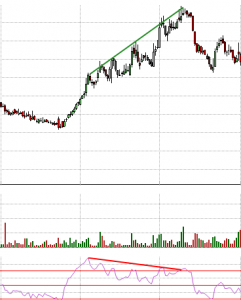
- Positive divergence happens when the price has a lower low but the indicator fails to do the same, instead has a higher high.

Trend
Trend is the general direction in which the price of a stock or other asset is moving. A stock, for example, is said to be in an uptrend if the price is advancing. If the price is declining, the stock is said to be in a downtrend. When the price is fairly stagnant, the trend is sideways. The trend refers to the general direction of the prices. Even when a stock is trending up, its price will decline on some days.
Moving Averages
If a stock’s price is highly volatile, exhibiting wild daily swings, it can be hard to visually interpret the trend merely by looking at a price chart. One tool that analysts use to better identify trends is the moving average. This is calculated by averaging prices over a specific number of days. A 10-day moving average equals the arithmetic average of the stock’s average closing price over the previous 10 days. By plotting the daily values of such an average, the analyst obtains a smoother line than the price graph, because up and down spikes in prices tend to cancel each other out over the course of 10 days.
How to Trade MACD and RSI Divergence
- RSI divergence
Divergence signals give the trader a favorable position by confirming an entry into a downtrend as it weakens and just before it transforms into an uptrend. It is additionally used to escape an uptrend as it weakens, and before it collapses into a downtrend. The divergence signal does not happen each time a trend changes, but rather when it does, it conveys a solid confirmation signal that a trend break is likely. RSI divergence signals often show up ahead of time of a trend change, yet they are not good at proposing the time of a trend change. According to Wilder, divergence between RSI and price action is a very strong indication that a market turning point is unavoidable. Bearish divergence occurs when price makes a new high but the RSI makes a lower high, thus failing to confirm. Bullish divergence occurs when price makes a new low but RSI makes a higher low.Figure below a bearish divergence in November 2014 to January 2015. The stock moved to new highs from November 2014 to January 2015, but RSI formed lower highs during the same period, thus forming the bearish divergence and indicating that a reversal is imminent.
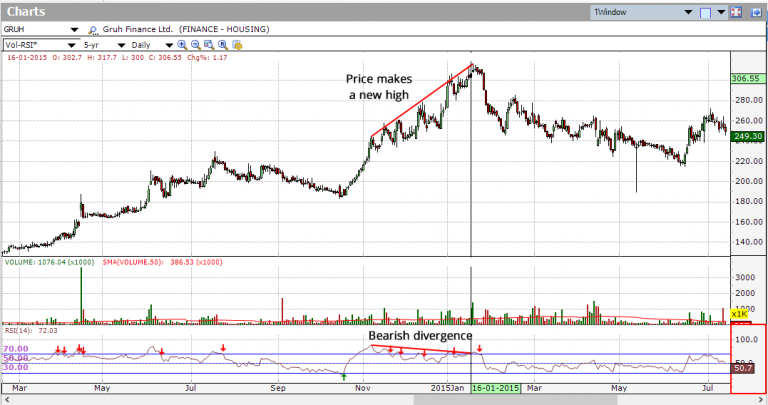
A bullish divergence formed in February 2016. As you can see in chart below, the stock moved to new lows from February 12, 2016 to February 29, 2016, but RSI formed higher highs during the same period.
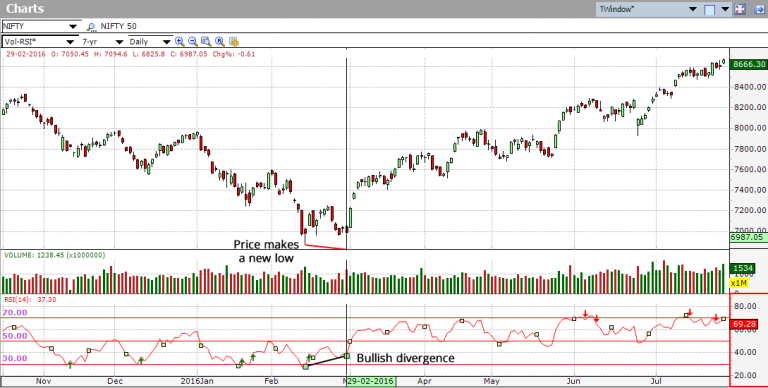
- MACD Histogram Divergence
MACD Histogram Divergence (or “MACD Divergence” for short) is one of the most famous and the strongest trading signals that MACD generates. MACD Divergence forms when the price goes up and makes higher highs and at the same time, MACD bars go down and make lower highs. A “positive divergence” or “bullish divergence” occurs when the price makes a new low but the MACD does not confirm with a new low of its own. A “negative divergence” or “bearish divergence” occurs when the price makes a new high but the MACD does not confirm with a new high of its own. A divergence with respect to price may occur on the MACD line and/or the MACD Histogram.
Below chart shows a bullish divergence in August 2013. Notice that price moved to a lower low in August, but the MACD-Histogram formed a higher low.
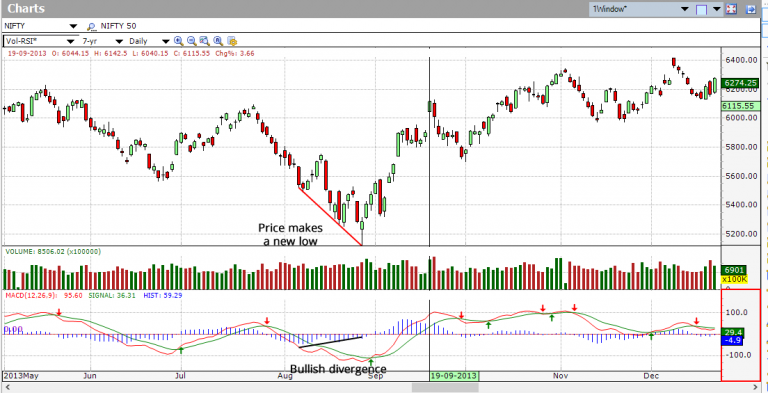
The divergence is a sign that the price is going to switch at the new high, and all things considered, it is a sign for the trader to go into a short position. Below chart shows a bearish divergence in November-December 2015. Price moved to a new high in November-December, but the MACD-Histogram formed a lower high.
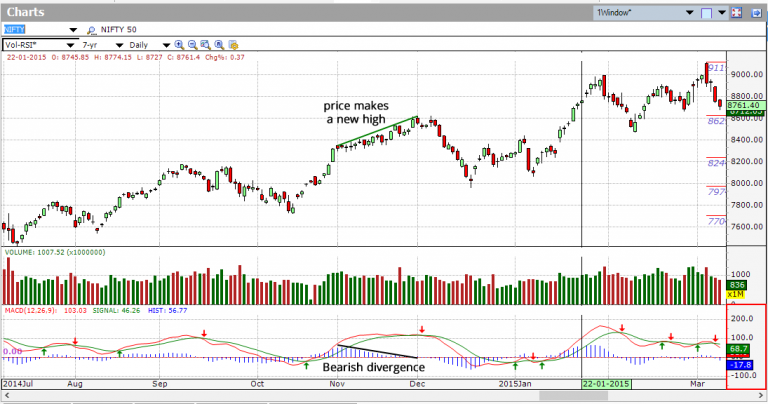
- RSI divergence
